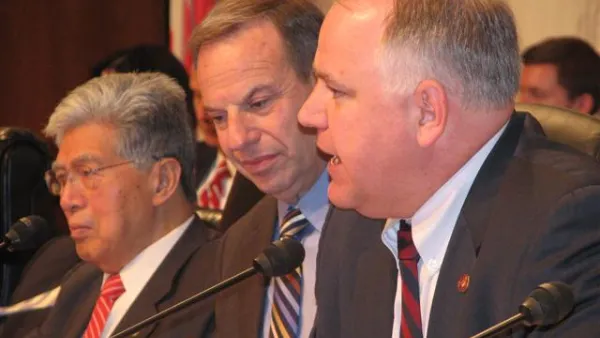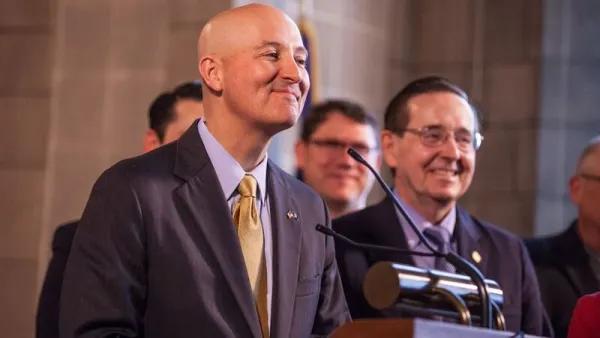All indicators show that America's infrastructure -- from roads to bridges to sewers to airports -- is in dire need of investment and repair. Can a National Infrastructure Bank make the difference?
"Perhaps because national infrastructure is so amenable to physiological comparison – highways are the nation's bloodstream, its sewage systems the digestive tract, its bridges synapses – it is also subject, at least in journalistic cliché, to one of life's few inevitabilities: aging.
Much of the evidence for this "infrastructural maturity" results from a 2005 report by the American Society of Civil Engineers (ASCE) that gave America's infrastructure an average of a D on its Infrastructure Report Card. Grades ranged from a D- for drinking water systems (there is a wide funding gap for improvements, particularly in urban centers) and navigable waterways (half the nation's locks are functionally obsolete) to a relief-inspiring C+ for solid waste (the number of landfills has declined, but mammoth regional fills have replaced them). The Center for Strategic and International Studies (CSIS) outlined similar concerns in its 2006 "Guiding Principles for Strengthening America's Infrastructure": aviation traffic will grow 39% by 2016, freight tonnage will increase 50% by 2020, and severe highway bottlenecks have already increased 40% in the last five years, but the structures that support these systems are deteriorating. 13,000 fatalities result each year from inadequate maintenance of highways, $63.2 billion are lost to traffic on the roadways, and $9 billion are lost to aviation delays.
Despite the ASCE's empirical evidence and our intuitive sense (when was the last time you sat bumper-to-bumper with an SUV or stood jowl-to-jowl with someone in the subway) that infrastructure is aging and inadequate, no large-scale effort has been undertaken to confront the problem in a comprehensive and purposeful manner. Even after a bridge collapsed in Minnesota , a steam pipe burst in New York City, and levees broke in New Orleans, attempts to mend our bridges, highways, and waterways still stall because of bureaucratic strife and ineffective funding.
The National Infrastructure Bank is a first step in creating a coherent vision of American infrastructure. First, the use of bonds – rather than a pay-as-you-go system that relies on yearly revenues – allows the federal government to develop a stable, long-term strategy for economic growth based on infrastructure improvements. Such a vision would emphasize the urban areas where most of the American population lives and from where most American prosperity is generated; would confront the environmental challenges associated with both aging infrastructure and new construction; and would consider the benefits and the dilemmas linked to the ever-increasing mobility of people and goods.
Interestingly, political support for an infrastructure bank is growing."
FULL STORY: The Age of Infrastructure

Analysis: Cybertruck Fatality Rate Far Exceeds That of Ford Pinto
The Tesla Cybertruck was recalled seven times last year.

National Parks Layoffs Will Cause Communities to Lose Billions
Thousands of essential park workers were laid off this week, just before the busy spring break season.

Retro-silient?: America’s First “Eco-burb,” The Woodlands Turns 50
A master-planned community north of Houston offers lessons on green infrastructure and resilient design, but falls short of its founder’s lofty affordability and walkability goals.

Test News Post 1
This is a summary

Analysis: Cybertruck Fatality Rate Far Exceeds That of Ford Pinto
The Tesla Cybertruck was recalled seven times last year.

Test News Headline 46
Test for the image on the front page.
Urban Design for Planners 1: Software Tools
This six-course series explores essential urban design concepts using open source software and equips planners with the tools they need to participate fully in the urban design process.
Planning for Universal Design
Learn the tools for implementing Universal Design in planning regulations.
EMC Planning Group, Inc.
Planetizen
Planetizen
Mpact (formerly Rail~Volution)
Great Falls Development Authority, Inc.
HUDs Office of Policy Development and Research
NYU Wagner Graduate School of Public Service



























